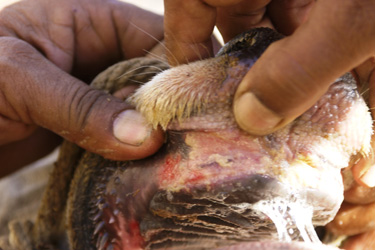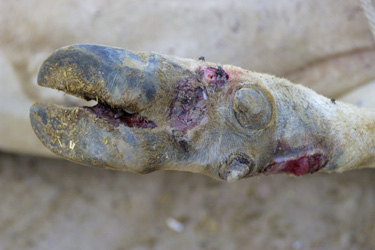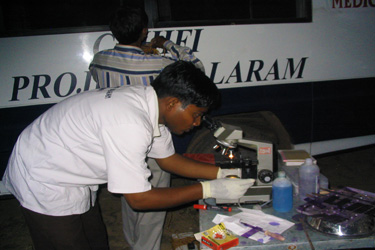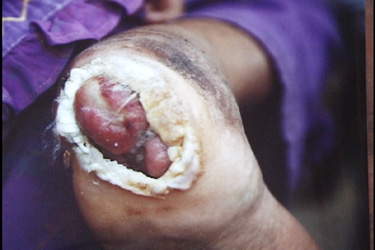CDH International Foundation
Infectious and Emerging Infectious Diseases
EID can affect all humans and animals
regardless of age, gender, ethnicity and
socioeconomic status. They are spreading at
an unprecedented rate.
Project Balaram - India
EID can affect all humans and animals
regardless of age, gender, ethnicity and
socioeconomic status. They are spreading at
an unprecedented rate.
Project Balaram - India

The top 5 photos are of
FMD which is spreading
rapidly. FMD can be carried in the lungs of humans and transmitted through the air.
Infectious, emerging and reemerging
diseases are spreading throughout the world with the increase of
international movement of humans animals, and freight.
There is an increase in viral, bacterial, parasitic, prion, fungal, vector, water, and food borne diseases.
Due to underreporting of many of these diseases and other factors, there have not been enough research projects to develop new drugs and diagnostics to keep up with the diseases. These problems have outpaced new cures as old one's have become much less effective, if at all. The growing problem of antimicrobial resistance further complicates the chances of a timely solution as this is happening at an alarming rate.
This problem is a burden to society especially the poor but will gradually spread and prove to be a burden to all of society.
Preventative measures must be taken, by developing rapid simple diagnostics, which can be used to identify these diseases at the source, in the field in remote regions. They must be treated if possible or isolated until there is an effective treatment.
New technologies that are being developed in all areas against the spread of these diseases, including diagnostics, water purification, and other new technologies must be simple to operate and repair in remote regions with few resources.
There is an increase in viral, bacterial, parasitic, prion, fungal, vector, water, and food borne diseases.
Due to underreporting of many of these diseases and other factors, there have not been enough research projects to develop new drugs and diagnostics to keep up with the diseases. These problems have outpaced new cures as old one's have become much less effective, if at all. The growing problem of antimicrobial resistance further complicates the chances of a timely solution as this is happening at an alarming rate.
This problem is a burden to society especially the poor but will gradually spread and prove to be a burden to all of society.
Preventative measures must be taken, by developing rapid simple diagnostics, which can be used to identify these diseases at the source, in the field in remote regions. They must be treated if possible or isolated until there is an effective treatment.
New technologies that are being developed in all areas against the spread of these diseases, including diagnostics, water purification, and other new technologies must be simple to operate and repair in remote regions with few resources.








.jpg)
